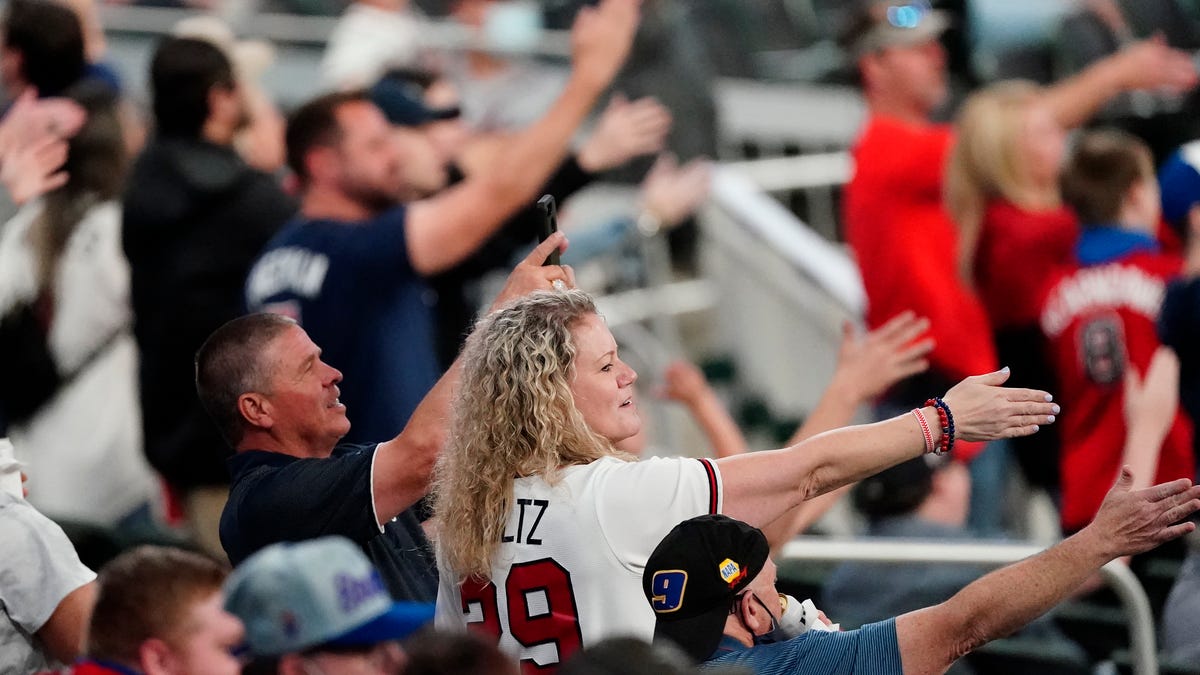
It's 2021. The Atlanta Braves are just one win away from winning the Word Series. They seem ready to be on the biggest stage in American sports, for the first time since 1999. 10 million people will tune in to their home games if they win, and their majority-white fanbase from their suburbs will perform the Tomahawk Chop together.
Advertisement
The Braves organization appears to have opted not to take responsibility for the racist name and tradition they created. They repeatedly stated that they would consult Native American groups, but despite statements by powerful Native American figures, they decided that they didn't need to change anything.
We have previously written about the Braves racism issues. These include their move from the city where they are named to a predominantly white suburb without public transportation access. Their claims that they would review and consult with Native American groups and their hypocritical statements regarding racial equality. James R. Floyd is the chief of the Muscogee Nation (Creek), who were forced from their ancestral homeland in Georgia by the Indian Removal Act and the subsequent Trail of Tears. He told CNN in 2019: "The Tomahawk Chop" may be a tradition for game day, but it does not acknowledge tribal culture or tradition. This reduces Native Americans as a stereotype and diminishes their contributions to society as equal citizens.
Ryan Helsley of the St. Louis Cardinals, a Cherokee Nation member, stated in 2019 that he found Chop to be an inaccurate representation of the Cherokee people, and Native Americans in general... It's not me being offended at the whole mascot thing. It's about how we are perceived and used as mascots. Redskins, and other such things.
These statements are made more poignant because of the misrepresentation and erasure of Native American histories in American history books and classes. High school and elementary students are taught that Native Americans are part of the past. They taught European colonizers how to grow corn and then participated in wars (read about massacres) alongside them. Many mainstream history textbooks state that the Trail of Tears was a sad event. There are pages about teepees or pueblos. But Native Americans are left to their pre-colonial history as a savage, uncivilized group. This is exactly what the current-day mascots are encouraging.
As if the lack of accurate Native American history was not enough, American Indian imagery could even be used out of context and in an entirely unnecessary manner in classes. This video shows Candace Read, a California math teacher, using a Native caricature as a way to teach trigonometry students about SohCahToah.
Advertisement
This may be why many Americans, including the Braves, fail to see the obvious issue of Native American imagery and names being used as mascots. This is not a hollow representation for a lost group. There are almost 3 million Native Americans living today in America, with millions more who have Native heritage. This argument, that it is only a small percentage of American population, makes the mascot issue even more clear. The Native American people who live today are the descendants from the few who were able survive the many and continuing attempts to genocide the native peoples of North America.
Native Americans still die every day from homicide or assault at twice the rate that the average American. Native American women are subject to sexual assault at twice as fast as any other American demographic, and nearly two-thirds (33%) of the attackers they encounter are non-Native. The healthcare issues faced by reservations are not even being addressed. Native Americans died at twice the rate as white Americans from coronavirus, and the Navajo Nation, the largest indigenous nation in America was particularly affected by COVID-19.
Advertisement
The Tomahawk Chop is a traditional game-day tradition. However, it does not acknowledge tribal culture or tradition. It makes Native Americans look like a cartoon and reduces their contributions as citizens and human beings.
I could go on about the decades of kidnapping Native American kids from their families and sending them to white-run schools to become menial workers. They were not allowed to access higher education and were not permitted to speak their languages and traditions in order to be civilized.
Advertisement
How does it look after centuries of Native culture erasure and literal genocide?
The Chop was performed by the Braves team. Old merchandise will not be banned from the stadium of the Cleveland baseball team, formerly known as the Indians. There is only so much that the top-ranking officials can do.
Advertisement
Atlanta's higher-ups have decided to stand firm behind their Chop tradition and their mascot. They continue to play the Chop music and hand out red foam tomahawks despite protests from Native Americans whose ancestors once inhabited the southeastern United States.
Advertisement
These offensive and hollow shells of Native American culture are what most Americans know about Indian history and culture. We don't get closer to understanding our country's genocide past. In fact, we may continue to move in the opposite direction as Native Americans are dehumanized through caricatures and visible popular culture.
You might ask, "Why do the mascots matter?" While they aren't doing any harm to Native Americans, I'd counter that removing racist names or traditions is a very small step. It doesnt even begin the process of creating justice, so why can't we even make performative gestures?
